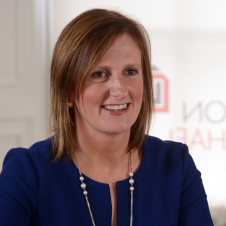Making sense of farm borrowings
The recent publication* of Scottish agricultural businesses bank borrowing showed that at the end of May 2017, total farm bank debt amounted to £2.32 billion. This figure has risen every year for the past 8 years with a 5% year on year increase. As UK inflation is running at around 2.9% this shows that there is an increase in debt in real terms over the past 12 months. (http://www.gov.scot/Publications/2017/09/2699/4)*
One reason for increased borrowing is that the cost of inputs such as seed, fertilisers, breeding stock or machinery, have all risen over the past year and much of this is due to the fall in value of sterling against the Euro. This currency movement has been good for farm produce prices but it also means that working capital requirements, or the amount of cash tied up in production, has increased. Earlier payment of 2016 farm support monies would greatly help to alleviate the need for farms to seek further increases in borrowing.
With most farms operating as partnerships or sole traders rather than companies, then the net profit is not the bottom line as far as cash expenditure goes. The net profit has to be high enough to also cover personal drawings and tax to leave the business with a surplus for the year and this will be reflected in the net assets of the business growing year on year. Even if this figure does show the business has grown, the cash position can still deteriorate due to other outgoings such as loan or HP repayments and expenditure on fixed assets such as land, buildings and machinery, which is in excess of the annual depreciation figure. Alternatively, if you spend less on machinery for example than your depreciation charge your cash position will be better but does this mean that the assets of the business are being run down?
In the short term, most businesses can cope with periods where although profitable, their cashflow is negative. Banks are generally supportive where a business can explain why there is a deficit on the cashflow and how it is expected to reverse in the future. This situation often arises in businesses that are investing for the future and will see the benefits of that investment coming through when the profits grow to cover the additional borrowings they have taken on. Ideally the farmer should have in place financial plans which demonstrate that some period of negative cashflow was not unexpected.
Given the historically low interest rates on borrowing, then increased borrowing on an interest only basis has not been too hard for most businesses to deal with, however the Bank of England’s recent announcements seem to have increased the likelihood of interest rate rises in the not too distant future.
Since the credit crunch and low interest rates, borrowers on variable rate loans have benefited most, whereas those on fixed rate loans have generally been paying interest at higher rates.
When considering a fixed rate one of the main criteria is to set a rate that you expect to be comfortable with, so you can plan your farm payments most effectively. Talk to us if you need advice.




